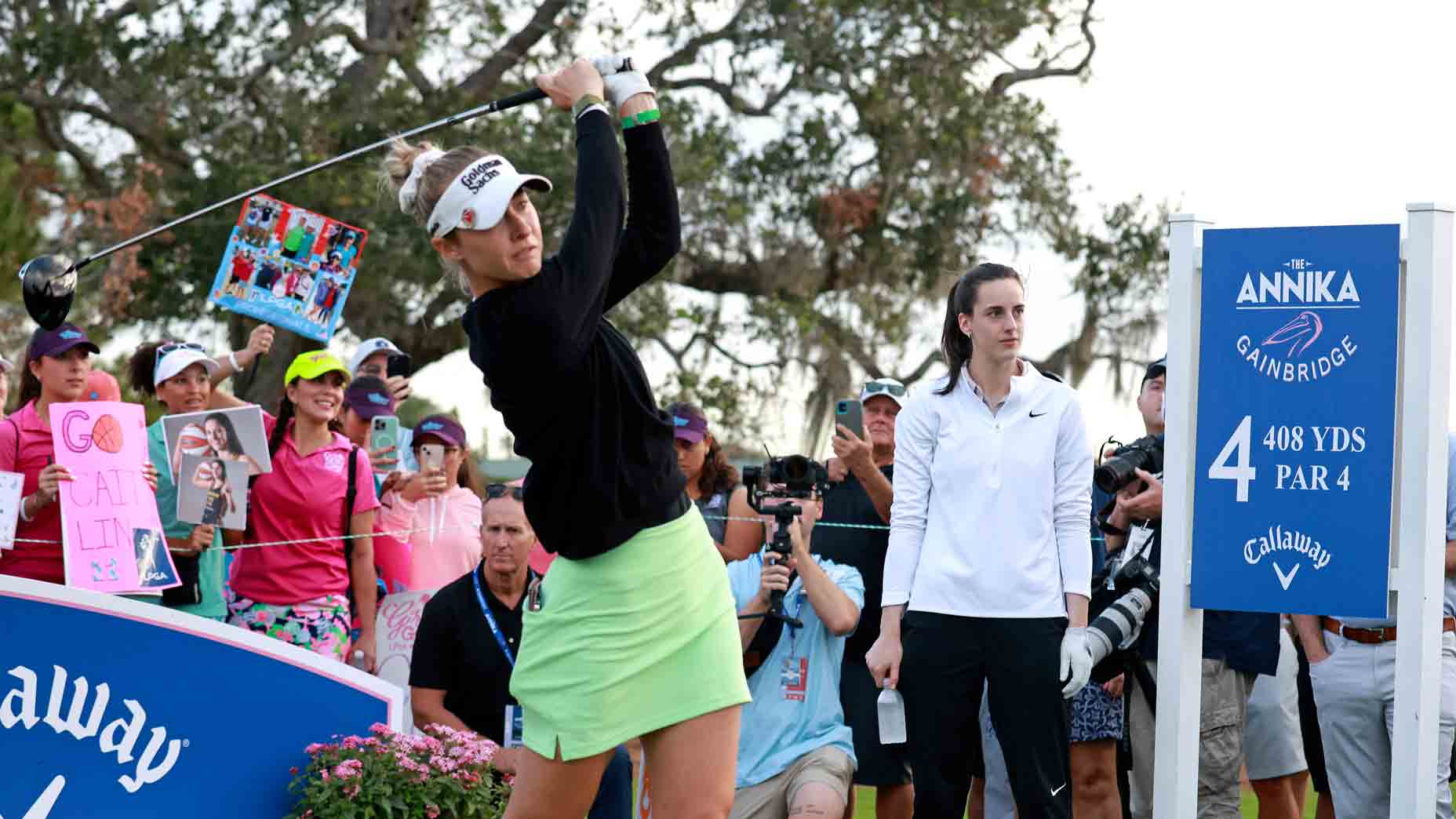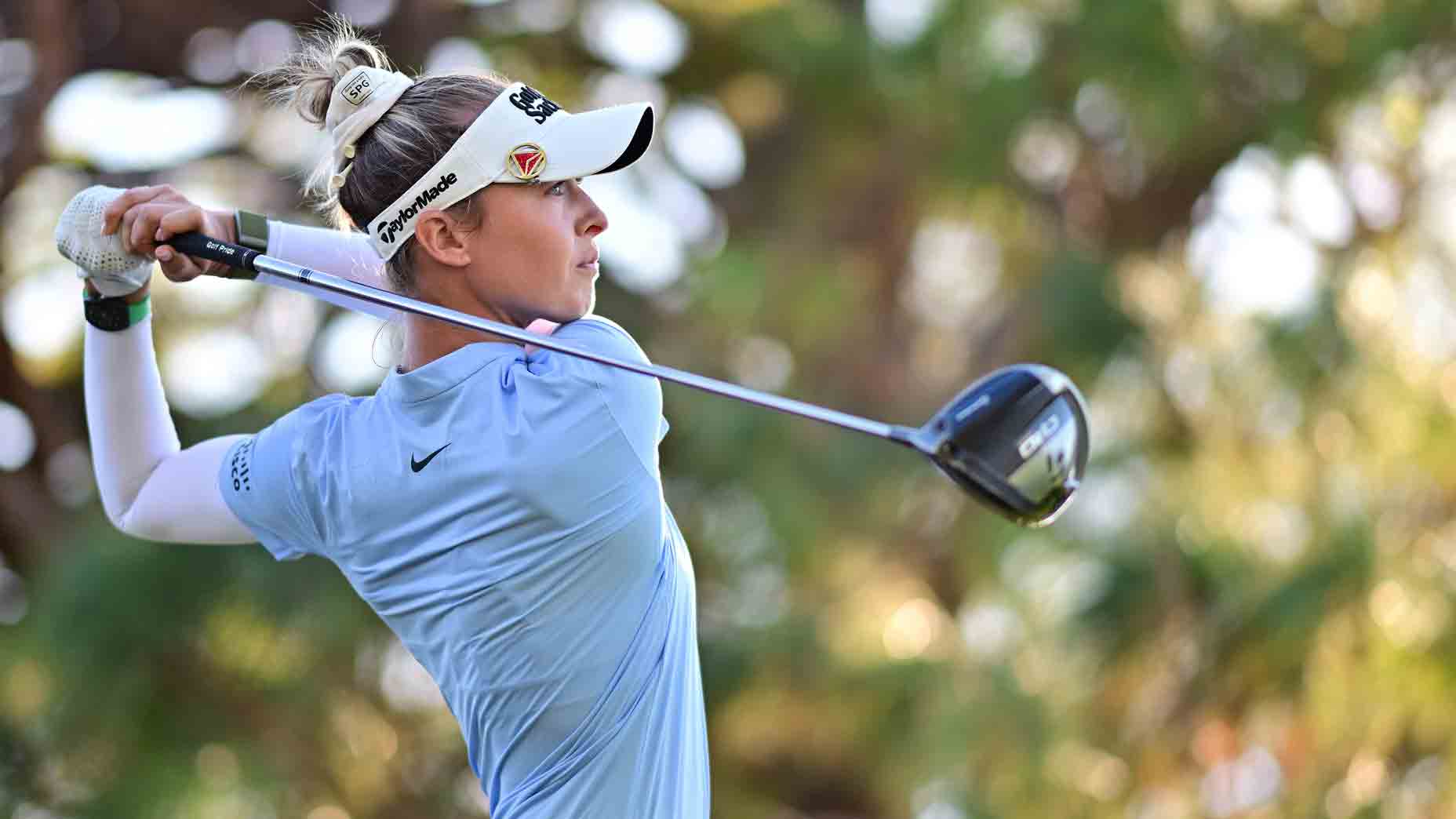Playing a little bit? Bathrooms? One of the LPGA’s most prominent figures has thoughts

Nick Piastowski
Angel Yin last month at the BMW Ladies Championship.
Getty Images
NAPLES, Fla. – Listen to Angel Yin, you hear thoughts about…Teslas. He watched the luxury car pass by, and then he revealed this story.
He also has questions about…Roger Clemens. His caddy looked at the previous pitcher, and Yin was curious.
Then there is a conversation with the drivers. But that’s a given. Yin is one of the best players in the world, and this week, he is among the top 60 in the CME Group Tour Championship, the LPGA’s season finale.
You are a living and thinking person. And personality, which is undoubtedly the highlight of the trip. Maybe you’ve seen his channel Deion Sanders. Maybe you heard his session with reporters last year at CME, where he talked, a little bit about everything. So it’s worth meeting him this year, if only to hear, well, a little bit.
Author questions are in italics. Although you can guess who.
The first article? His thoughts on the Tour Championship record prize.
What would $4 million mean to you if you won?
“A lot of money, a lot of taxes, but a lot of my work, year after year, to have more freedom in who I want to hire and what I want in my team. It creates more financial freedom. We want funding because we want them to support our work, and we need it sometimes because our work is gambling from time to time. He just gives us as a player and as a person more freedom.”
What’s the most fun thing to use it for?
“I don’t know. Checking stocks. Lately I’ve been getting into stocks. Maybe that would be my fun thing. Invest it.”
I think this year, in pro golf in general, there seems to be a lot of proposals, a lot of ideas on the table. There is a change. There are arrangements for men’s tours, women’s tours. If you were running the LPGA, what big-ticket item would you change?
“That’s a difficult question because I don’t know if there are any big ticket items that I will change because I think the direction we are heading is good. We have a great wave of women’s sports rising. Maybe my main focus in everything is not to get more sponsors but to make it known. As the women’s sport is gaining momentum, if you don’t surf it just fades away and you have to catch that wave.”

Has the LPGA capitalized on the boom in women’s sports? Or did it fail?
By:
Nick Piastowski
Have you thought about the possibility?
“Oh, I don’t know. I think things like that, getting into the details, to be able to give honest feedback, someone who can look at all the numbers and all the strategies over the last five, six years and see where we can improve and compare what other organizations are doing. If I had to give an answer right now, it would be to invest in players. For example, Nelly [Korda]. Nelly does a lot. Nelly won her seventh tournament, she got her Sports Illustrated a swimsuit, she went to the Met Gala – she does a lot. And he puts his name there. Even if you know, and you represent all of us so we really appreciate what you are doing and you are doing well. So yes, just invest in the players. ”
What’s one really small thing you could change? To help you with the answer, I asked this question last year to Jon Rahmand said that on the men’s tour, he would like to see more bathrooms on the course. So it could be something as small as that. But what can change the low key?
“Man, I didn’t think about it because — let’s think about it. More toilets? No, I think we have enough bathrooms. And because you know why toilets are not a big problem? Because as girls, we can’t just go anywhere to pee. So that’s been a problem that we’ve been dealing with, and I think we’ve seen results from that. Honestly right now, we are doing OK. … However, our journey is too good to receive us.”
Along those lines, and you’ve said, with Nelly, about women’s sports in general, Caitlin Clark rising in women’s basketball, that this was an opportunity for the LPGA to seize that moment. Do you think they did a good job with that?
“No.”
Why do you say that?

My niece wants to break 80. So I asked Nelly Korda for one tip
By:
Nick Piastowski
“Wow, it doesn’t make sense. It’s an idea. Caitlin Clark came to our tournament and created a crowd, created a buzz – she didn’t feel like she got out there enough. He went out to some people. But I don’t know, as I said, to give a detailed answer, I have to like – I want to be responsible for my answers so I don’t want to talk. But if you have to ask how I feel about that, I don’t think we spent that much money. Riding the wave that other people do is only associated with women. Unfortunately, I don’t think we did enough.”
One golf question I had. So my 16 year old nephew he’s trying to break 80 and get on his high school team next year. What advice would you give him?
“Hit the ball, not the ball. It’s easy. I think a lot of people try to hit in football because it’s the only game you play where the ball is really stationary and you have to follow it. In football they throw you; tennis, the ball comes to you — you react. When this one, you have to, I don’t know, follow the ball. It’s a little different. You have to make the ball go.”
Last question. Is slow play a problem on the LPGA tour?
“So, I have my own ideas. I know Charlie [Hull] he gave the answer.”
I will ask for your solution later.
“I just found out about it this morning. It was funny and I played with it on the golf course today. But if I really have to say, the last years I was on tour, I think it was worse before. It was very bad before, we were waiting a lot, and I think now we have a good mix of fast players and that’s where the slow players start to show. Because most of the girls play very fast, where you can’t take too much or start backing off. Although we have some tee delays this year. But that would be the course setup this year, slots and all. Our experts move slowly. That can also be a space issue. So I don’t think it’s the players in particular.”
Like last week and the lack of daylight.

How to finally solve slow play? Oh, is it Nelly Korda, some experts have thoughts
By:
Nick Piastowski
“Yes. I think it’s just a matter of space because we wake up to the box and it’s already late and it’s breakfast time. So how does that fall on the player? And that goes back to where I think we can improve as a tour, a small issue. I can’t point fingers too much, but there are certain types of people that I feel should be able to manage that better. I think the easiest way to point fingers without thinking too much about it is to play it slow, but it takes a lot for the schedules to match, and if the schedules don’t match, then we’re just sitting in a hole. And I think that’s where he shows up. At the US Open, we had a slow hole where there were four top seeded teams there. But that’s also because the pin didn’t really make sense…”
Episode 3.
“Yes. Nelly got a 10, I think. So things like that. It has nothing to do with the player. I’m sure Nelly is moving very fast. If you take drops and do this and that, there is nothing we can do about it. Or for example, last week on the 18th, there is a law enforcement officer sitting in that hole, waiting for us. If a player makes seven, he will take seven shots and seven shots of the time. So that adds up. So I think that’s where it happened. And so my solution is better planning, better placement. It must be difficult. It shouldn’t be stupid. But yeah, I think there are slower players out there, but I don’t think it’s as bad as it used to be. Because when I first visited, I could take a nap. It was very bad. And indeed they were getting warnings. So they are very strong now. They make the right moves. But I think it’s always easy for everyone to point fingers at the players.”
“>

Nick Piastowski
Golf.com Editor
Nick Piastowski is a Senior Editor at Golf.com and Golf Magazine. In his role, he is responsible for planning, writing and promoting news on the golf course. And when he’s not writing about how to hit the golf ball forward and straight, the Milwaukee native is probably playing the game, hitting the ball left, right and short, and drinking a cold beer to wash down his scores. You can contact him about any of these topics – his news, his game or his beer – at nick.piastowski@golf.com.
Source link



